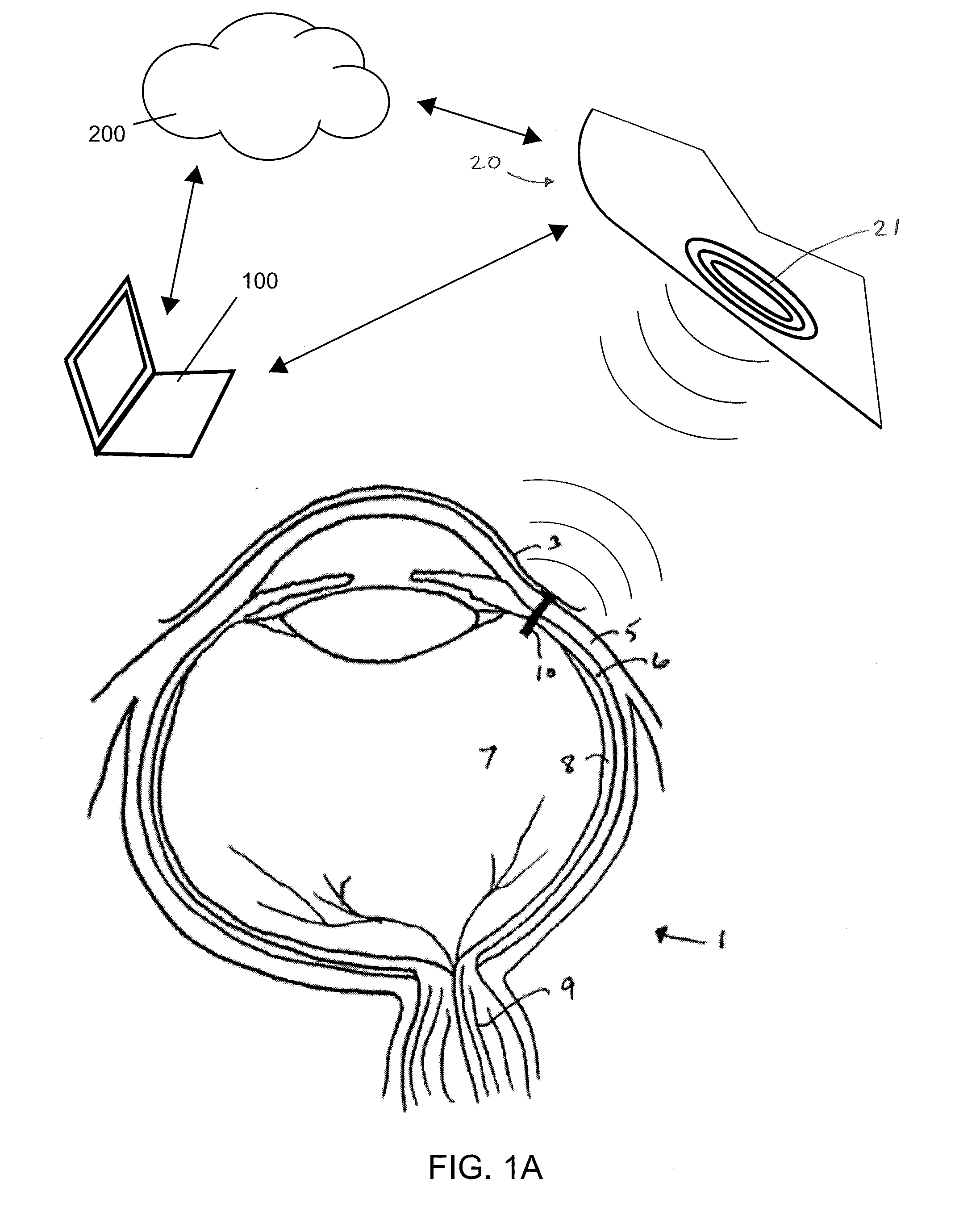Ultra low power charging implant sensors with wireless interface for patient monitoring
a low-power, implant-based technology, applied in the field of intraocular pressure monitoring devices and methods, can solve the problems of low power requirements that may not necessitate any particular alignment, damage to delicate structures, and the risk of affecting vision significantly or the associated liability, so as to improve the versatility and reprogramming/updating, improve the effect of power management and improve the treatment
- Summary
- Abstract
- Description
- Claims
- Application Information
AI Technical Summary
Benefits of technology
Problems solved by technology
Method used
Image
Examples
Embodiment Construction
[0037]FIG. 1A is an overview illustration of a miniature sensor device 10 implanted within an eye 1 in wireless communication with an external portable device 20 held in close proximity to the eye for charging and / or data transmission. While implanted within the eye, the miniature sensor device 10 obtains multiple pressure measurements over a given time increment according to a sampling program stored on a memory of the sensor device 10 and stores pressure measurement information corresponding to the multiple pressure measurements on the memory of the device powered by energy stored in an energy storage component of the sensor device 10. Upon detection of a coil of an external data acquisition / charging device held in close proximity to the eye having an implanted sensor device, a charging and / or telemetry sequence is initiated in which one or more coils of the sensor device 10 wirelessly couple with one or more corresponding coils 21 of the external device 20 and transmit energy to ...
PUM
 Login to View More
Login to View More Abstract
Description
Claims
Application Information
 Login to View More
Login to View More - R&D
- Intellectual Property
- Life Sciences
- Materials
- Tech Scout
- Unparalleled Data Quality
- Higher Quality Content
- 60% Fewer Hallucinations
Browse by: Latest US Patents, China's latest patents, Technical Efficacy Thesaurus, Application Domain, Technology Topic, Popular Technical Reports.
© 2025 PatSnap. All rights reserved.Legal|Privacy policy|Modern Slavery Act Transparency Statement|Sitemap|About US| Contact US: help@patsnap.com



